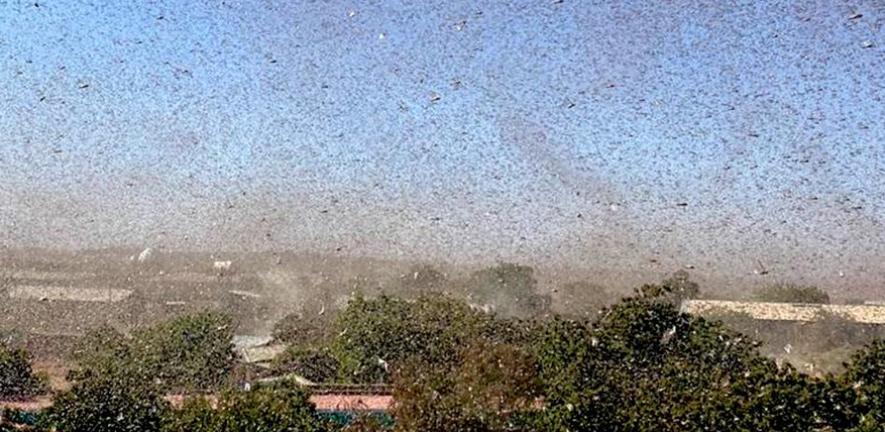
Submitted by Jane Durkin on Mon, 23/12/2024 - 13:15
A new tool that predicts the behaviour of desert locust populations will help national agencies to manage huge swarms before they devastate food crops in Africa and Asia.
Desert locusts typically lead solitary lives until something - like intense rainfall - triggers them to swarm in vast numbers, often with devastating consequences.
This migratory pest can reach plague proportions, and a swarm covering one square kilometre can consume enough food in one day to feed 35,000 people. Such extensive crop destruction pushes up local food prices and can lead to riots and mass starvation.
Now a team led by the Epidemiology and Modelling group at the University of Cambridge has developed a way to predict when and where desert locusts will swarm, so they can be dealt with before the problem gets out of hand.
It uses weather forecast data from the UK Met Office, and state-of the-art computational models of the insects’ movements in the air, to predict where swarms will go as they search for new feeding and breeding grounds. The areas likely to be affected can then be sprayed with pesticides.
Until now, predicting and controlling locust swarms has been ‘hit and miss’, according to the researchers. Their new model, published today in the journal PLOS Computational Biology, will enable national agencies to respond quickly to a developing locust threat.
Read full article: Early warning tool will help control huge locust swarms
Reference: Retkute, R., et al: ‘A framework for modelling desert locust population dynamics and large-scale dispersal.’ PLOS Computational Biology, December 2024. DOI: 10.1371/journal.pcbi.1012562
Image: Locust swarm fills the skies in Ethiopia. Credit: Keith Cressman, FAO.
